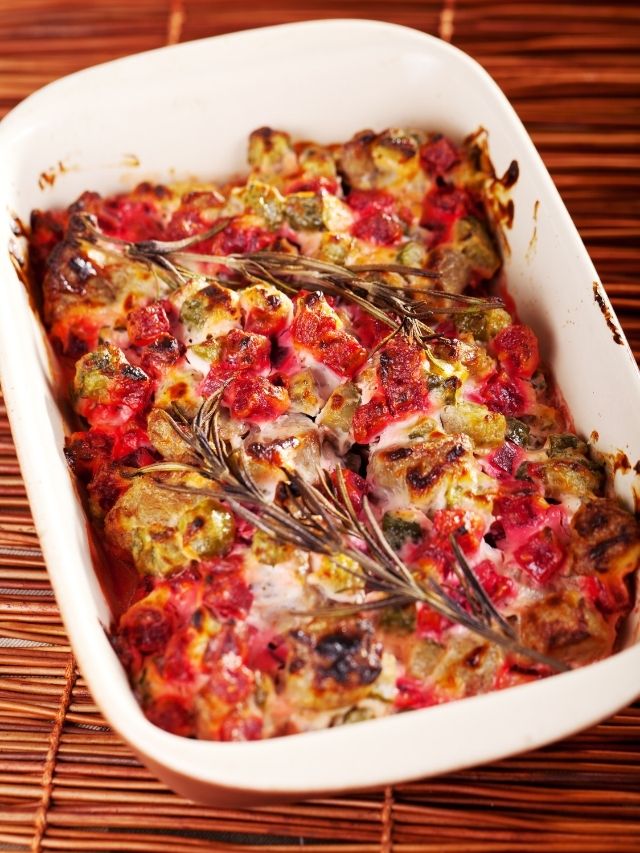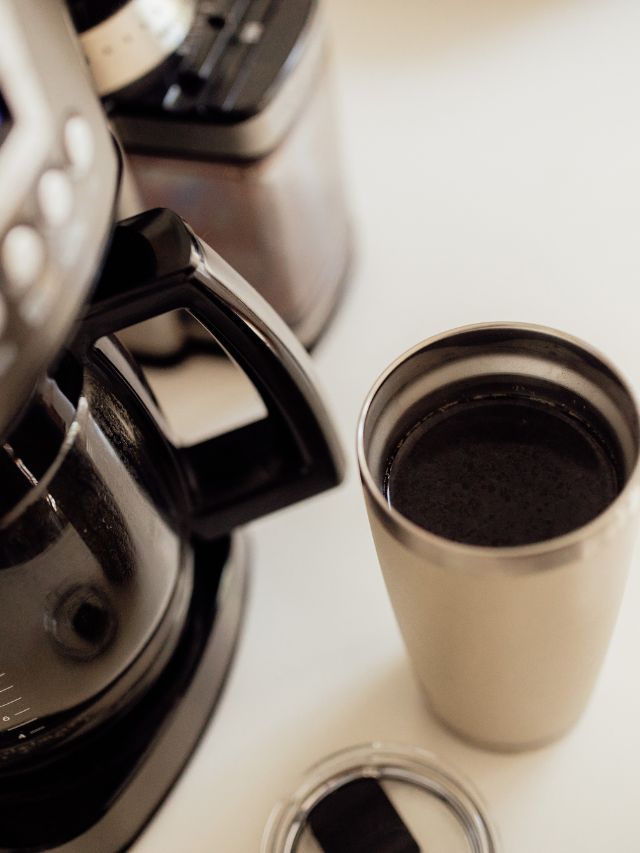What Is The Difference Of Sirloin Tip Vs Tri Tip Steak
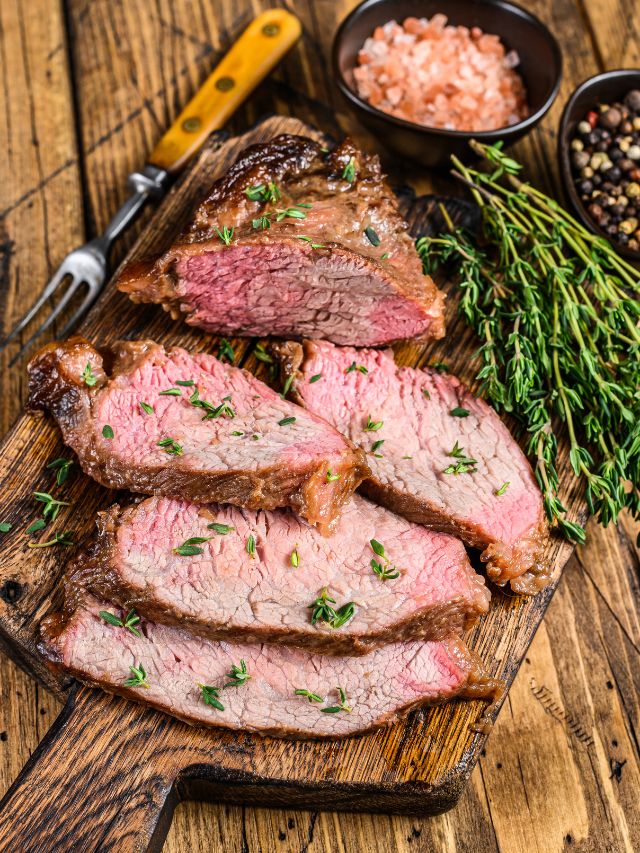
When it comes to choosing the perfect cut of beef for a mouthwatering meal, understanding the main difference between sirloin steak tip vs tri tip steak can be quite helpful next time.
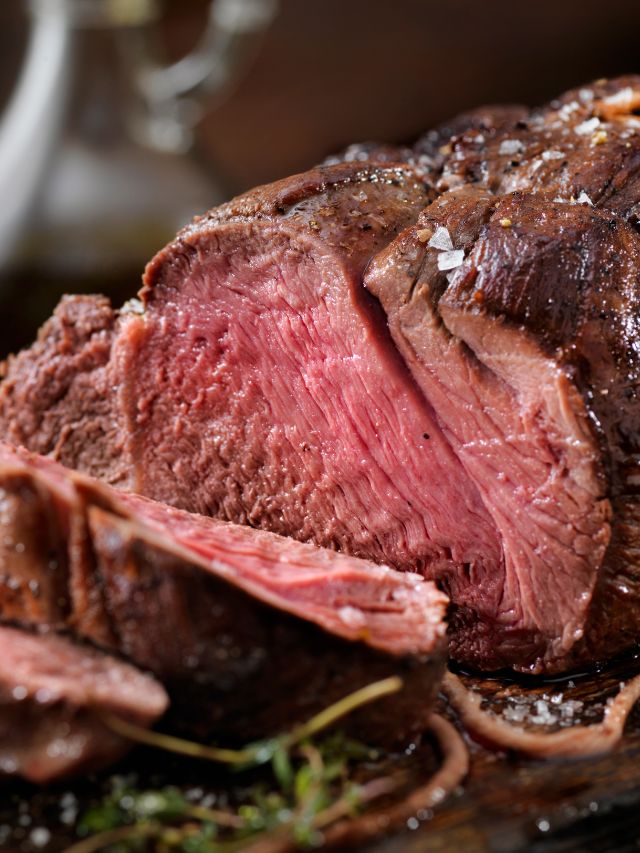
Both cuts originate from the back half of the steer but have distinctive characteristics and flavor profiles. Which can make a significant impact on your culinary experience.
Knowing the distinctions between these two cuts is essential for selecting the right option for the best results on your specific dish and preparation method.
The tip of the sirloin, also known as the round tip, is cut from the top end of the round primal located at the front section of the hind leg.
This cut has a medium degree of tenderness, meaning it’s not as tender as the tri-tip but remains juicy and soft when cooked properly.
Expect a degree of chewiness without toughness or dryness.
On the other hand, tri-tip cuts come from the bottom of the sirloin and is a triangle steak roast with a decent amount of marbling. Offering a richer and more tender texture compared to the bottom sirloin tip.
Despite their differences, both sirloin tip and tri-tip can be prepared in various ways. From grilling to roasting, allowing each cut to showcase its unique flavors and textures.
By understanding these nuances, you can make a more informed decision when it comes to selecting the right cut for your next beef dish.
Sirloin Tip vs Tri Tip
Basic Differences
Sirloin tip and tri tip are the best cuts of beef that come from different parts of the steer.
The sirloin tip is cut from the round portion, while the tri tip comes from bottom sirloin cuts.
They differ in several ways, such as their shape, level of marbling, and taste. Tri tip has a unique, savory flavor and is more marbled than the sirloin tip.
It is also a triangular cut of beef. On the other hand, the sirloin tip is a leaner cut of beef, so it is a good option for more robust seasoning.
| Sirloin Tip | Tri Tip |
| Cut from the round portion | Cut from the bottom sirloin |
| Lean steak with less marbling | More marbled |
| Benefits from robust seasoning | Savory and unique flavor |
Similarities
Both sirloin tip and tri tip cuts are found on the back half of the steer, but the sirloin tip comes from the top end of the round primal. While the tri tip is from the bottom of the bottom sirloin subprimal cut.
These two meat cuts are both used to prepare delicious beef dishes and can be cooked in various ways.
For example, the top sirloin steak, derived from sirloin tip, can be broiled, grilled, skillet-cooked, or stir-fried, while the tri-tip steak is also recommended for grilling and broiling.
Other types of cooking process that home chefs like to use are charcoal grill with red oak fire, slow cooking, stew meat and pellet grill.
The cook time varies depending on the type of meat because meat cooks at different times.
When comparing sirloin tip and tri tip, one should consider their differences in flavor, marbling, and cooking methods.
But also acknowledge their similarities in being some of the most popular beef cuts from the back half of the steer.
Both can be enjoyed in a variety of dishes, and the choice between them often comes down to personal preference and cooking style.
Cuts of Beef
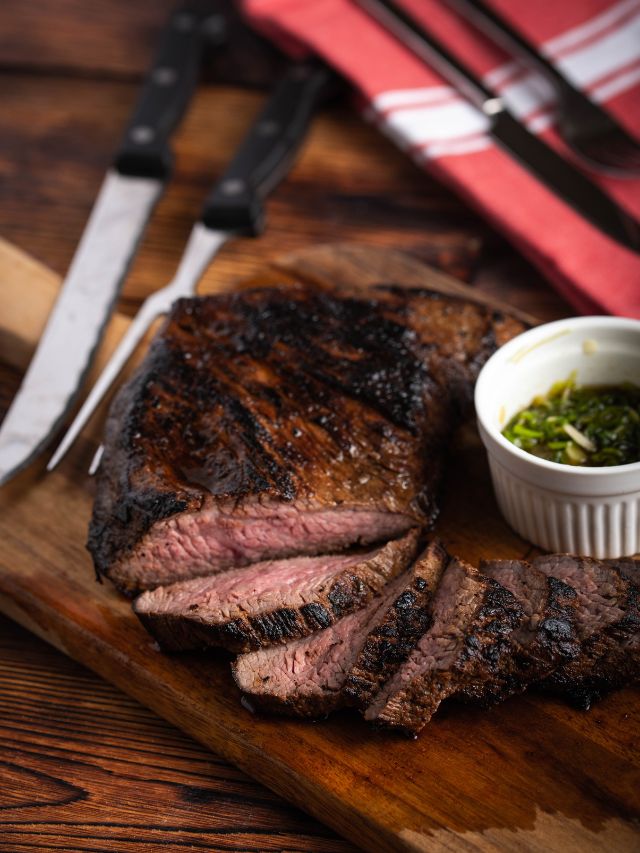
Identifying Sirloin Tip
Sirloin tip, also known as knuckle, is cut from the round primal section of the steer. Which is located at the rear leg.
It’s a lean cut with a medium degree of tenderness and can be expected to remain a juicy steak that is soft when cooked properly. However, it may have a slight chewiness without being tough or dry.
This cut often comes in steaks that are between 1 1/2 and 2-inches thick. A favorite way of making it is to either grill or roast it.
Sirloin tip is a separate cut from top sirloin, which is located at the upper portion of the sirloin primal, and bottom sirloin, which is found in the lower section.
Some popular recipes or dishes made using the sirloin tip cut include kabobs, stir-fries, Santa Maria steak barbecues, and beef stroganoff.
Identifying Tri Tip
Tri tip is a triangle roast cut from the bottom half of the sirloin primal.
This cut is known for its decent amount of marbling and rich flavor profile. Making it taste great when grilled or barbecued.
It is also known as a Santa Maria cut or California cut, because tri tip first became popular in Santa Maria, California.
The tri tip’s grain pattern has both horizontal and vertical directions.
For the most tender cut, it’s recommended to cut the steak in half where the two grain patterns intersect and then slice each piece against the grain.
Taking a closer look, tri tip is often simpler to cook, considering its size and consistent thickness.
Beyond sirloin tip and tri tip, there are various other cuts of beef deriving from different names and primal sections, such as:
- Loin: New York strip, T-bone, porterhouse steak. Short loins are commonly prepared as boneless steak.
- Tenderloin: Filet mignon
- Rib: Ribeye steak, prime rib
- Chuck: Chuck roast, shoulder steak
- Flank: Flank steak, bavette steak
- Plate: Skirt steak
- Brisket: Brisket flat, brisket point like beef brisket, whole brisket and full brisket
- Flap: cut from the bottom sirloin butt
Each of these cuts offers unique flavors, textures, and ideal cooking methods. Resulting in a diverse range of delicious beef dishes.
As a reminder, the tougher cut of meat include shank, round, flank, plate, chuck, and brisket.
Texture and Tenderness
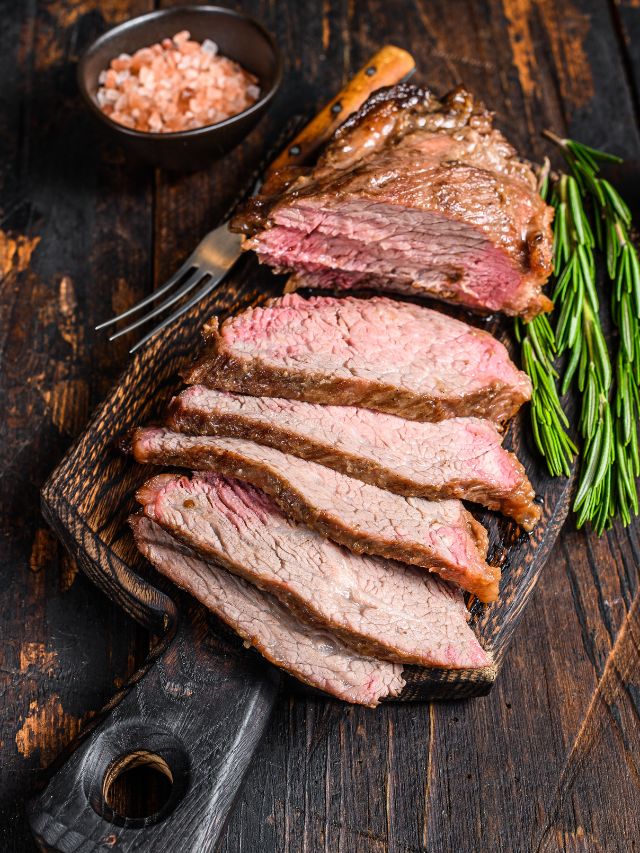
When comparing sirloin tip and tri-tip, the texture and tenderness of these two cuts of beef play a significant role in their overall appeal.
Sirloin tip is cut from the round portion of the steer and is known to be leaner compared to the tri-tip.
With a medium degree of tenderness, the sirloin tip is juicy and soft when cooked properly, though it does have a degree of chewiness without toughness or dryness.
To achieve the desired tenderness in a sirloin tip, look for a steak with a thickness ranging between 1 1/2 and 2 inches.
On the other hand, tri-tip comes from the bottom half of the sirloin and is a triangle-shaped roast.
It is characterized by its marbling, which contributes to its moist and tender texture.
This cut has a higher fat content than the sirloin tip, which gives it its signature flavor and juiciness.
If the meat ever has too much of a fat cap, just make sure to cut as much off depending on your preferences.
The texture of both cuts differs due to their connective tissue content, with the sirloin tip having more connective tissues than the tri-tip.
As a result, the sirloin tip may require a longer cooking time or more careful temperature control to break down the connective tissue and achieve the desired tenderness.
In summary
- Sirloin Tip:
- Leaner cut with medium degree of tenderness.
- Chewier texture due to more connective tissue.
- Juicy and soft flavorful steak when cooked properly.
- Tri-Tip:
- More marbling, resulting in a moist and tender texture.
- Higher fat content for signature flavor and juiciness.
- Less connective tissue for a more tender mouthfeel.
By understanding the differences in texture, amount of meat, and tenderness between sirloin tip and tri-tip, cooks can better determine which cut has less meat, more meat, or is more suitable for a particular dish, allowing for a delicious and satisfying dining experience.
Flavor and Marinating

When it comes to flavor, tri-tip and sirloin tip have some key differences.
Tri-tip is known for its unique, savory taste, with a rich, sweet quality that many people prefer over other types of steak.
This stronger, beefy flavor comes from its relatively higher fat content compared to sirloin tip.
On the other hand, sirloin tip has a milder flavor, making it a versatile choice for various dishes.
To enhance the flavor of both tri-tip and sirloin tip, marinating the meat in either dry rub or sauces is a great option.
A good marinade can penetrate the meat and add depth to its taste, creating an even more enjoyable eating experience.
Some popular ingredients to incorporate into a marinade include:
- Garlic
- Balsamic vinegar
- Soy sauce
- Worcestershire sauce
- Black pepper
You can experiment with various combinations of these ingredients to create a marinade that suits your taste preferences.
Other options to consider adding to your marinade are ketchup, lemon, and lime juice. Which can further enhance the flavor of the meat.
When marinating the meat, it’s essential to give it enough time to absorb the flavors properly.
Depending on the cut and thickness of the meat, this can take anywhere from 30 minutes to a few hours.
Keep in mind that marinating is not the only way to bring out the meat’s natural flavors; alternative methods include dry rubs and brines.
Make sure to find the best technique that complements your chosen cut of beef, whether it’s tri-tip or sirloin tip.
Grilling Tip Recipes and Cooking Techniques
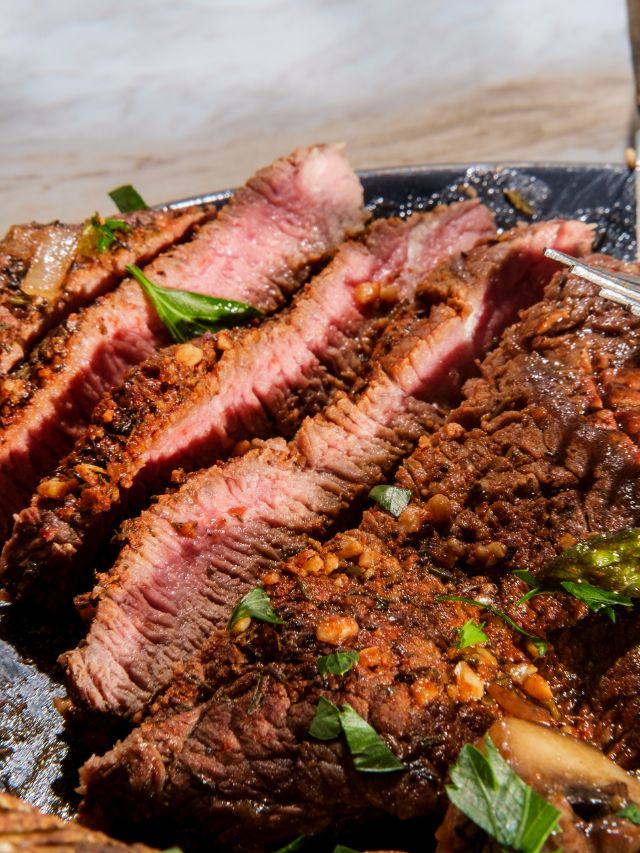
Grilling Tips
When grilling sirloin tip and tri-tip, there are a few key differences to keep in mind.
For the sirloin tip, you’ll want to use a more robust seasoning as it is leaner than the tri-tip.
Grill the sirloin tip steaks until they reach an internal temperature of 135 degrees Fahrenheit for medium-rare. About 3-4 minutes per side.
For tri-tip, the best way you may want to prepare it is to:
- Use a cutting board to cut out the tri-tip
- Preheat the grill to medium-high heat
- Use direct heat for the initial sear, then move the tip roasts to indirect heat for the remainder of the cooking time
- Cook to an internal temperature of 130-135 degrees Fahrenheit for medium-rare
Alternative Cooking Methods
Roasted: Both sirloin tip and tri-tip can be oven-roasted. Preheat the oven to 350 degrees Fahrenheit and place the meat on a roasting rack in a shallow pan.
Cook until the desired internal temperature is reached.
Fried: Although not as common for these cuts of meat, pan-frying in a cast-iron skillet can be done by heating the skillet over medium-high heat.
Cooking the steak on both sides until it reaches your desired doneness.
Smoked: Smoking sirloin tip and tri-tip can add a rich, smoky flavor.
To smoke, preheat your smoker to 225-250 degrees Fahrenheit, and smoke until the desired internal temperature is reached.
This can take several hours, depending on the size and thickness of the meat.
Foil: Cooking in foil can help lock in moisture and flavor, especially for leaner cuts like sirloin tip.
To cook in foil, preheat your oven, grill, or smoker, wrap the meat tightly in foil, and cook until the desired internal temperature is reached.
Popular Recipes and Dishes
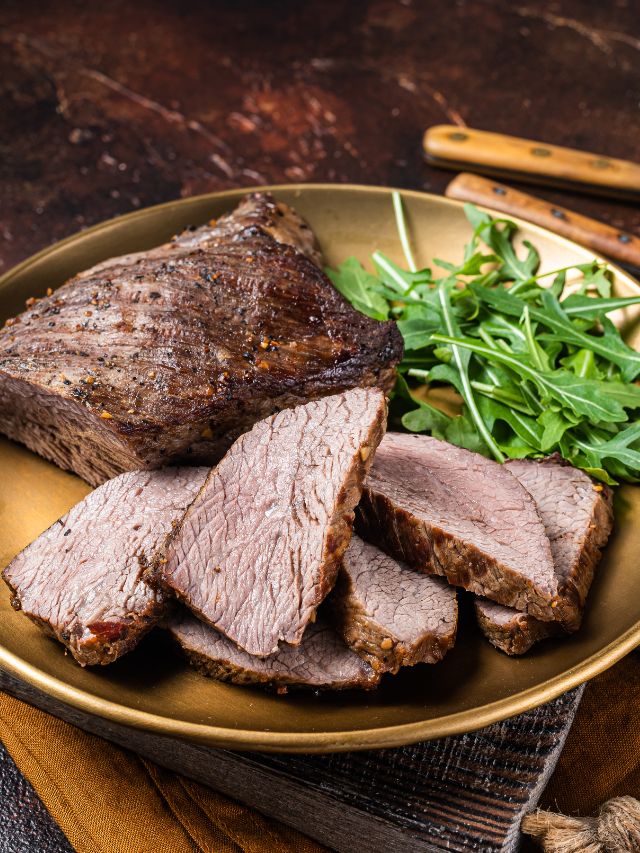
Sirloin Tip Roast Recipes
Slow Cooker Sirloin Tip Roast: Sirloin tip roast is often cooked in a slow cooker to achieve a tender, flavorful result.
A popular recipe involves simply seasoning the roast with salt, pepper, and garlic before placing it in the slow cooker with an easy tomato sauce.
You can serve this dish with cauliflower rice for a keto-friendly meal.
Tri-Tip Roast Recipes
Grilled Marinated Tri-Tip: A well-marbled tri-tip roast can be seasoned with a mix of kosher salt, freshly ground black pepper, garlic powder, dried oregano, onion powder, fresh rosemary, and cayenne pepper.
After marinating for at least an hour, the tri-tip is grilled to perfection.
Oven-Roasted Tri-Tip: If you prefer an oven-roasted recipe, try seasoning a tri-tip roast with granulated garlic, kosher salt, and coarsely ground black pepper.
Sear the roast in a hot pan with vegetable or canola oil before transferring it to the oven. Roast until it reaches the desired temperature, then let it rest before slicing.
Tri-Tip Chili Recipe
Texas-style Tri-Tip Chili: For a unique and flavorful chili, cube into thin slices and brown tri-tip in a skillet.
Then combine it with ground beef, tomatoes, beer, tequila, jalapeno peppers, bacon, and seasonings.
This dish is a great option for tailgating parties or a hearty dinner at home.
Whether you choose to cook a sirloin tip or tri-tip, there are plenty of delicious recipes to explore.
From slow cooker roasts to oven-roasted or grilled options, you’ll find a dish that’s perfect for a lot of people on any occasion or personal preference.
Shopping and Market Tips
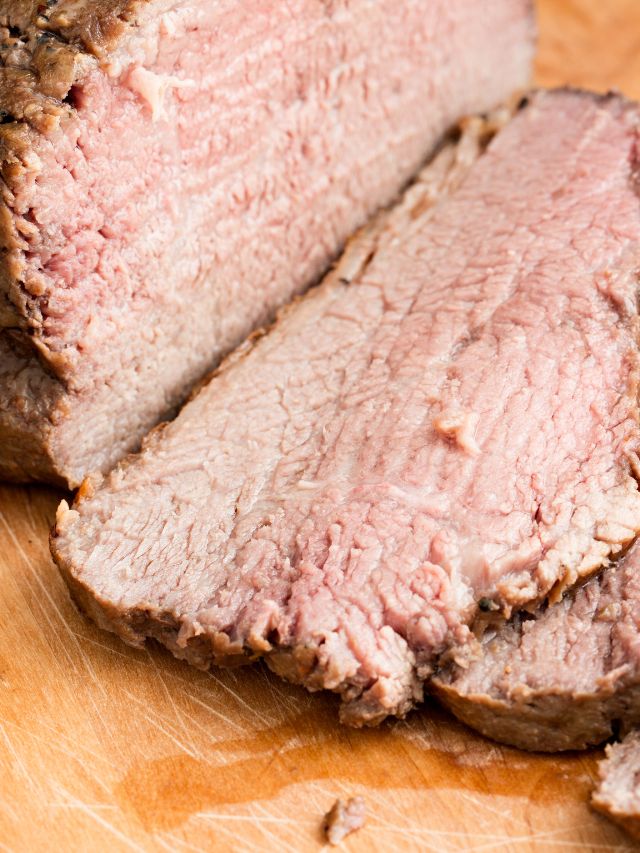
When shopping for sirloin tip and tri-tip steaks, it’s essential to understand the differences between the two cuts to make the best decision.
These cuts can be bought from your local grocery store or a good butcher. Just buy a pound of meat from your choice of cut and use it in a dish.
Sirloin tip, despite its name, is actually cut from the round portion of the steer, making it a leaner option.
It is a more affordable cut compared to tri-tip, with mid-range affordability. When selecting a sirloin tip, look for steaks that are between 1 1/2 and 2 inches thick.
Avoid anything thinner than 1 1/2 inches, as they can be difficult to cook properly.
Tri-tip, on the other hand, comes from the bottom half of the sirloin and is characterized by its distinct triangular shape.
This cut is more popular on the West Coast, particularly in California. It is sometimes referred to as a Newport steak.
Tri-tip usually runs thinner and slightly larger than sirloin tip, weighing between 1 1/2 to 2 1/2 pounds.
The cost of tri-tip per pound typically ranges between $6.50 to $8, making it a budget-friendly option for grilling.
To ensure you get the best quality steaks, consider purchasing your cuts from a reputable butcher or market.
Many specialty stores even offer pre-sliced options for both sirloin tip and tri-tip, ensuring the steak is cut to the ideal thickness.
Keep the following points in mind when shopping for sirloin tip and tri-tip:
- Sirloin tip is cut from the round portion of the steer and is generally more affordable
- Tri-tip is a triangle-shaped cut from the bottom half of the sirloin, more popular on the West Coast
- Look for ideally sized and sliced cuts from reputable butchers or markets
Common Misconceptions and Confusions
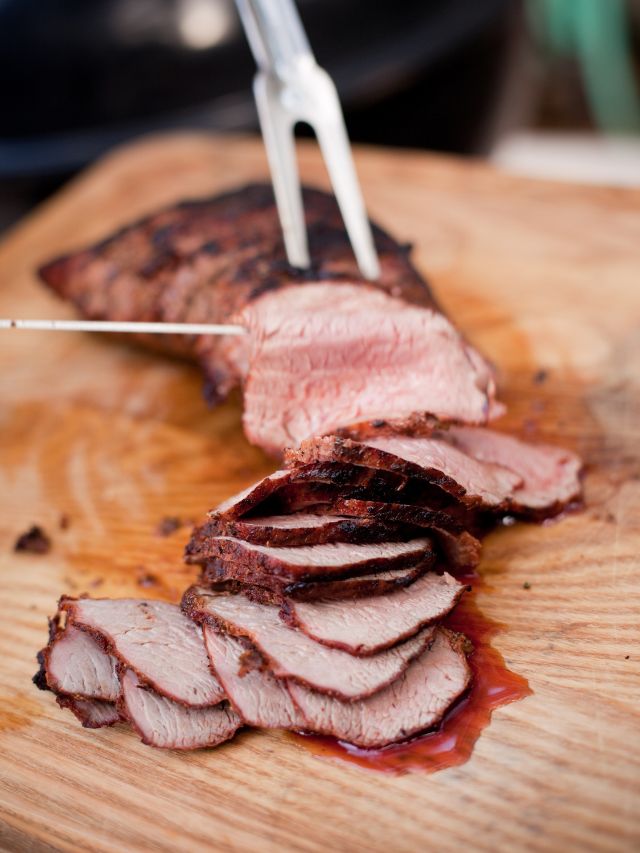
One common misconception is that sirloin tip and tri-tip are the same cut of meat.
In reality, sirloin tip is cut from the round portion of the steer, while tri-tip comes from the bottom half of the sirloin.
The names can be confusing, but they actually refer to two different cuts of beef.
Another source of confusion when comparing these cuts is the thickness of the meat.
Some people mistakenly believe that tri-tip is always thinner or thicker than a sirloin tip.
In reality, the thickness can vary for both cuts, depending on how the butcher has prepared them.
Though there are general tendencies, like tri-tip often being thicker due to its triangular shape, there isn’t a strict rule regarding thickness.
When it comes to flavor and tenderness, people often confuse the two cuts.
Although both cuts are flavorful, tri-tip is usually considered more tender and has a richer, beefier flavor due to its higher amount of fat and location within the thigh muscle.
This can sometimes lead to misunderstandings about their cooking time and methods.
A common comparison people tend to make is between the tenderness of pulled meat from different cuts.
While both sirloin tip and tri-tip can be used in recipes calling for pulled beef, their textures will differ due to factors such as marbling and fat content.
Tri-tip might produce a slightly more tender and moist pulled meat option, whereas sirloin tip may be leaner.
Lastly, regional availability can contribute to misconceptions about these cuts. For example, sirloin tips are more commonly found on the East Coast, while tri-tip is more popular on the West Coast.
This can lead to people believing that one cut is superior to the other, when in fact it’s a matter of personal preference and regional accessibility.
Serving Suggestions
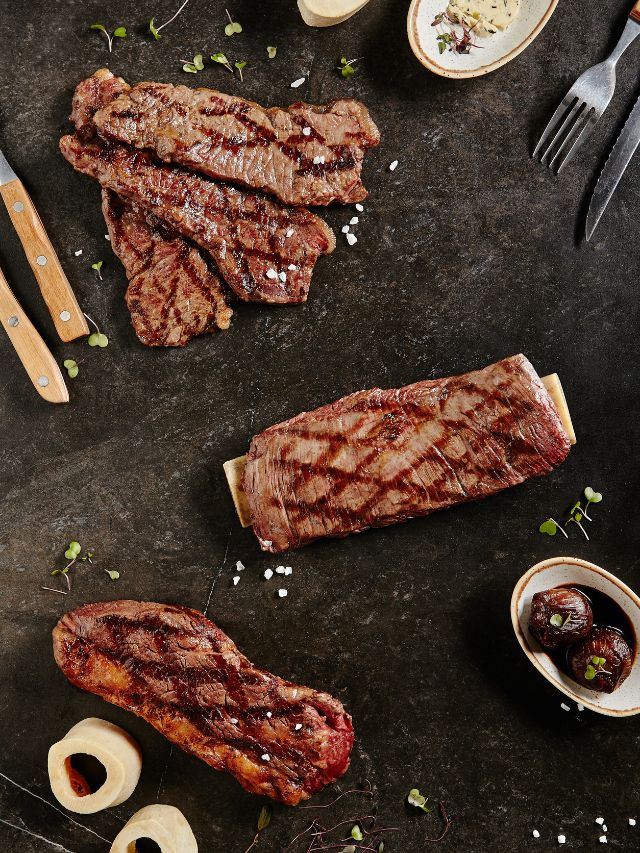
When preparing a sirloin tip or tri-tip meal, the accompaniments and seasonings you use can greatly enhance the overall dining experience.
The potatoes, seasonings, and cooking techniques mentioned here are both versatile and easy to find.
Potatoes
Potatoes are an excellent side dish for both sirloin tip and tri-tip. When preparing a side of potatoes, consider the following methods:
- Mashed potatoes: Creamy and buttery, mashed potatoes complement the rich flavors of the meat. To prepare, simply boil peeled and diced potatoes until fork-tender, then mash with butter, cream, and seasoning to taste.
- Roasted potatoes: A crispier alternative to mashed potatoes, roasted potatoes are easy to make. Toss diced potatoes in olive oil, season with kosher salt and other spices, and spread on a baking sheet. Roast at 425°F until golden and crispy, about 25-30 minutes.
Seasonings
Proper seasoning is crucial to bringing out the best flavors from your sirloin tip or tri-tip. Here are some suggested seasonings to enhance the flavor of your chosen cut:
- Kosher salt: An essential seasoning for any steak, kosher salt helps to tenderize the meat and enhance its natural flavors.
- Pepper: Freshly ground black pepper adds a necessary kick to the taste of the meat.
- Garlic: Minced garlic or garlic powder provides a hint of savory depth to the dish.
- Marinades: For more intense flavor in the sirloin tip, marinate the steak in a mixture of olive oil, vinegar, or Worcestershire sauce, along with your preferred seasoning blend.
Cooking Tips
When cooking your sirloin tip or tri-tip, taking some extra care with the methods and tools used can make a significant difference. Here are some helpful tips:
- Olive oil: Use olive oil to lightly coat the surface of the meat, ensuring a better sear and even browning.
- Preheat: Allow the steak to sit at room temperature for about 30 minutes before cooking. This promotes even cooking, preventing the interior from being undercooked while the exterior is overdone.
- Foil: To retain moisture and enhance flavors, try wrapping your steak in foil and allowing it to rest for a few minutes after cooking. This also helps redistribute the juices throughout the meat, making it even more tender and delicious.
Remember to experiment with different accompaniments and seasonings to find the perfect combination that suits your specific tastes or preferences.
Things to Remember
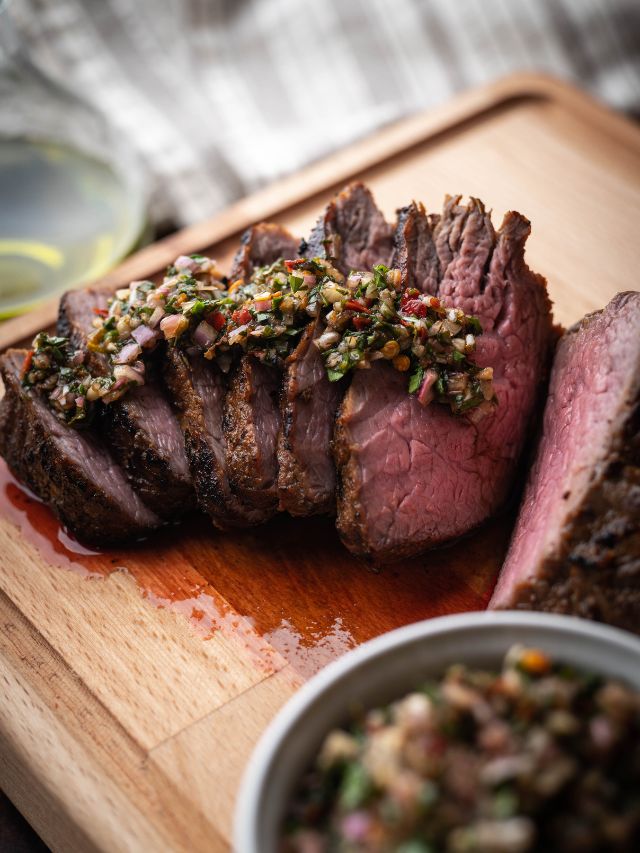
In comparing the two cuts, we see distinct differences between sirloin tip and tri-tip.
The sirloin tip, cut from the round portion of the steer, is a leaner cut that benefits from robust seasoning.
On the other hand, tri-tip, a triangular-shaped roast from the bottom half of the sirloin, has more marbling and a unique and savory flavor that many people love.
Tri-tip has more fat, which contributes to its rich, sweet quality and meatiness.
Consequently, it is generally considered to have a more tender texture compared to the sirloin tip.
Its location in the steer’s thigh muscle results in connective tissue that breaks down during cooking, further enhancing its juiciness and buttery flavor.
When it comes to preparation, the two cuts require different cooking methods for optimal results.
Sirloin tip benefits from slow roasting, braising, or even marinating before grilling. While tri-tip can be cooked directly over high heat to achieve the desired tenderness and flavor.
Both cuts have their place in culinary applications, and the choice between them ultimately depends on personal preference and desired flavor profiles.
Whether you prefer the lean, robust taste of the sirloin tip or the juicy, tender tri-tip, these cuts offer delicious options for beef lovers.
Final Thoughts
When comparing the popular cuts of sirloin tip and tri-tip, both offer distinct flavors and textures.
The sirloin tip, located in the bottom front of the cow, is a lean cut that can be used for various recipes. It is often known for its tenderness and versatility in different cooking methods.
On the other hand, the tri-tip, also known as flap meat, is a triangular cut from the bottom sirloin region, offering a rich flavor and slightly firmer texture.
While both cuts are flavorful, the choice between sirloin tip and tri-tip ultimately depends on personal preference and the desired outcome of the dish.
Experimenting with these cuts can lead to delicious and satisfying meals, adding diversity to one’s culinary repertoire.
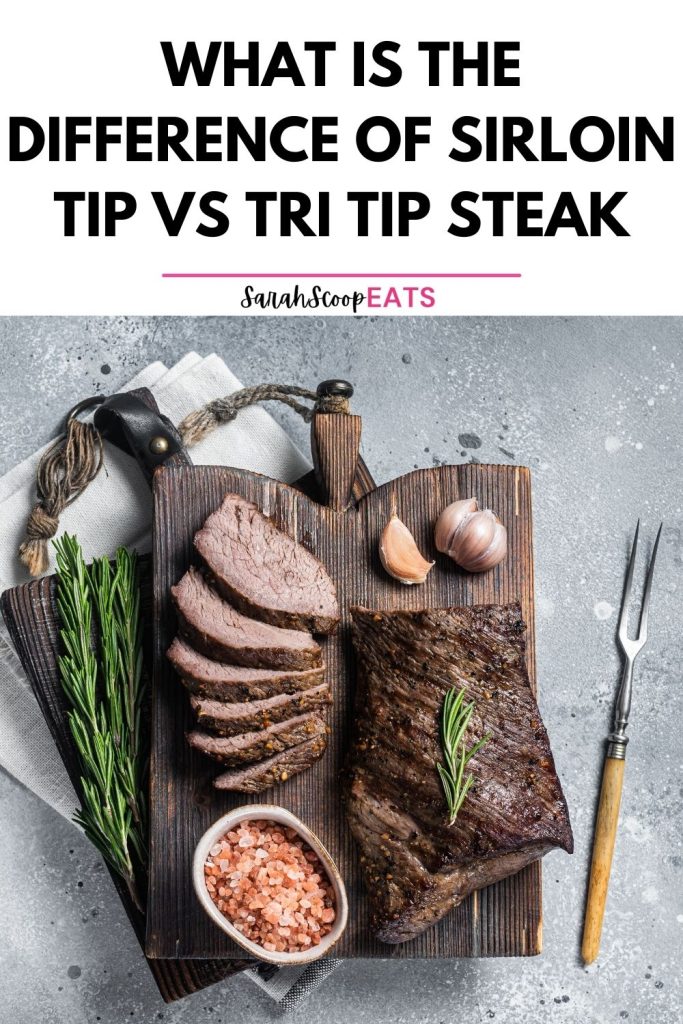
Get the scoop on more like this:



